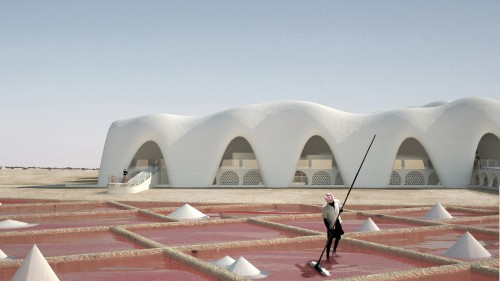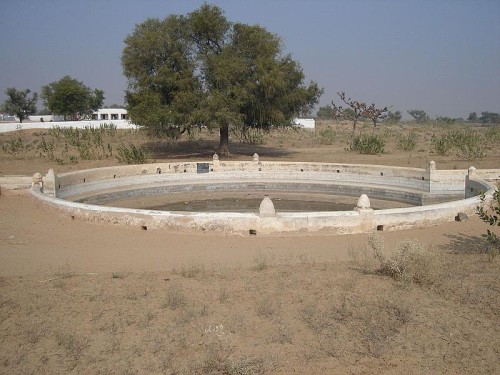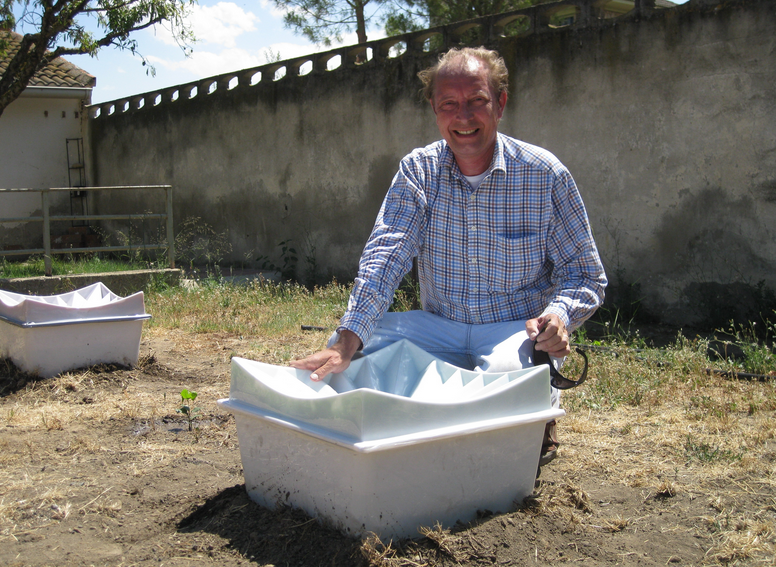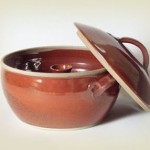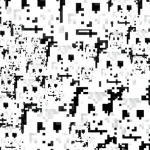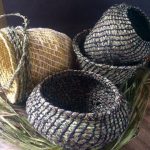“The Salt Project is a biomimetic attempt to create architecture using seawater in the desert. By using locally available resources we can grow plants and create architecture without producing waste. The idea is to pump up seawater in arid areas around the world, split it in salt and fresh water, use the fresh water for produce and use the salt for architecture.” [Read more…]
Water Johads: A Low-Tech Alternative to Mega-Dams in India
When the British colonized India, they imposed their own system of water management, which included the building of large-scale dams, sewers, and irrigation channels. This high-tech approach continues today, as the World Bank is urging India to build enormous dam projects to fight drought and depleted aquifers. The Indian government has followed its advice. Its first Prime Minister, Jawaharlal Nehru, called dams the “Temples of modern India”. Since then, India has built over 5,000 dams and large reservoirs. [1]
However, before the British arrived, people on the subcontinent used traditional low-cost, low-tech engineering to collect rainwater for thousands of years. This involved the placement of thousands of small structures throughout rural areas which, in one way or another, catch excess rainwater from the monsoon months and allow it to slowly percolate into the groundwater during the dry season. To maintain and manage these structures, community-based management schemes were necessary. However, these were actively discouraged during British rule and following independence. As a result, in the 20th century many of these small reservoirs fell into disrepair.
Water Batteries for Trees
“Using groundwater to grow crops and trees doesn’t make sense to Pieter Hoff, a Dutch inventor. Not only are traditional irrigation techniques inefficient because most of the water is lost to evaporation, Mr. Hoff says, but water can be easily captured from the atmosphere to grow just about anything.
To prove his point, Mr. Hoff retired from the lily and tulip export business in 2003, established his company, AquaPro, and devoted himself to the development of the Groasis Waterboxx (manuals), which he says will grow food crops and trees even in the driest places on earth.” Read more.
Grasses Can’t Graze Themselves: Combating Desertification Using Herd Animals
“Enormous research efforts have been made to understand and reverse desertification, but until recently, and with one remarkable exception, to no avail. That exception, Operation Hope, has transformed 6,500 acres of parched and degraded grasslands in Zimbabwe into lush pastures replete with ponds and flowing streams – even during periods of drought. Surprisingly, this was accomplished through a dramatic increase in the number of herd animals on the land. Behind Operation Hope is an approach called ‘holistic management’, which they apply to rangeland practice. Developed over the past 50 years by Operation Hope founder Allan Savory, a former wildlife biologist, farmer, and politician, it challenges the dominant theory that desertification is caused by overgrazing.”
Read at Seed Magazine (+ links & video + 90 page handbook – pdf)
